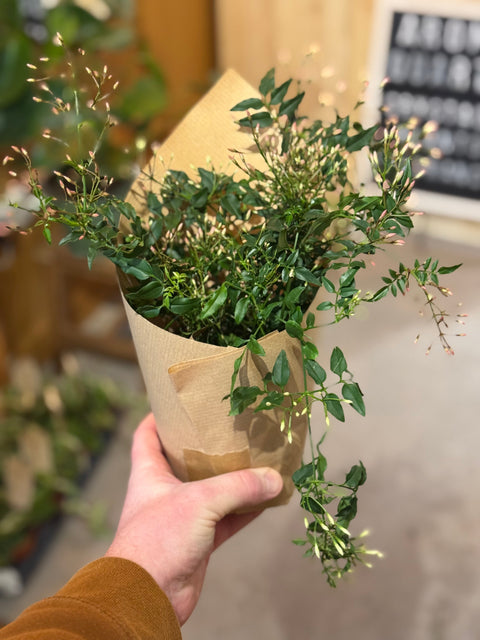The Polka Dot Plant, or Hypoestes phyllostachya, is a charming and colourful houseplant known for its freckled foliage. With pink, white, red, or even purple spots on vibrant green leaves, it’s a bold, playful addition to any indoor garden.
While it’s relatively easy to care for, this plant does have a few quirks. In this guide, we’ll walk you through everything you need to keep your Polka Dot Plant happy and thriving.
🌸 Quick Overview
- Botanical Name: Hypoestes phyllostachya
- Common Name: Polka Dot Plant
- Native To: Madagascar
- Light Needs: Bright, indirect light
- Watering: Keep soil evenly moist, avoid drying out
- Pet Safety: Non-toxic to cats and dogs (ASPCA safe)
☀️ Light Requirements
Polka Dot Plants love bright, indirect light. Too little light causes the vibrant colours to fade, while too much direct sun may scorch the delicate leaves.
💡 Tip: Rotate your plant regularly to maintain even colouring and shape.
💧 Watering
This plant likes consistently moist soil, but not soggy conditions. Let the top 1–2 cm of soil dry out slightly between waterings.
- Water less frequently in winter.
- Yellow leaves may signal overwatering; drooping usually means it’s too dry.
🪴 Soil & Potting
Use a light, well-draining indoor potting mix. A mix containing peat moss or coco coir with added perlite is ideal.
Make sure your pot has drainage holes to prevent waterlogging.
💦 Humidity & Temperature
Polka Dot Plants enjoy moderate to high humidity and warm temperatures.
- Humidity: 50% or higher
- Temperature: 18–24°C (65–75°F)
If your space is dry, increase humidity using a pebble tray, room humidifier, or group it with other plants.
🌿 Pruning & Maintenance
Pinch back leggy stems regularly to encourage bushy growth. Polka Dot Plants grow quickly and can become sparse without trimming.
- Use clean scissors to cut just above a leaf node.
- Remove flowers when they appear to extend the plant’s lifespan (it tends to go dormant or die after flowering).
🌱 Propagation
Polka Dot Plants are super easy to propagate through stem cuttings.
- Cut a healthy stem just below a node (4–6 inches long).
- Remove the lower leaves and place the cutting in water or moist soil.
- Roots will develop within 1–2 weeks. Transplant once established.
🍽️ Feeding
Feed monthly during the growing season (spring through summer) with a balanced, water-soluble houseplant fertiliser.
Reduce or stop fertilising in autumn and winter when the plant’s growth slows.
🚨 Common Problems
- Leggy Growth: Caused by low light—move to a brighter spot and trim back.
- Faded Colours: Not enough light or overwatering.
- Wilting: Usually from underwatering or low humidity.
- Pests: Keep an eye out for aphids, spider mites, and whiteflies. Treat with neem oil or insecticidal soap.
🌟 Extra Tips for Success
- Polka Dot Plants can be grown as annuals outdoors in summer or indoors year-round.
- If your plant becomes leggy, don't be afraid to prune it aggressively—it will bounce back quickly.
- Polka Dot Plants make great additions to terrariums due to their humidity needs and compact size.
Final Thoughts
The Polka Dot Plant is a fun, beginner-friendly houseplant that adds a splash of colour to any shelf or desk. With the right care and regular pruning, it can stay full and vibrant year-round. Whether you choose pink, red, or white-speckled varieties, Hypoestes phyllostachya is a plant that always makes a statement.



